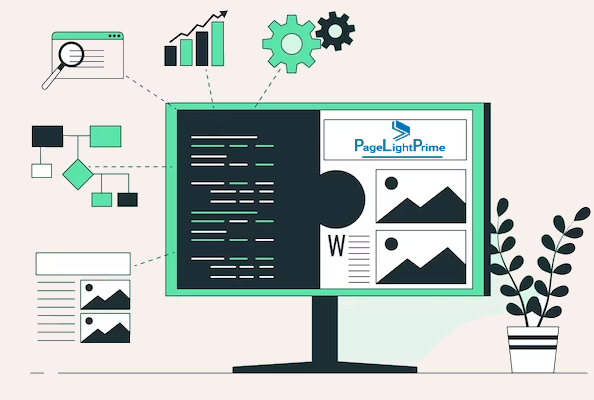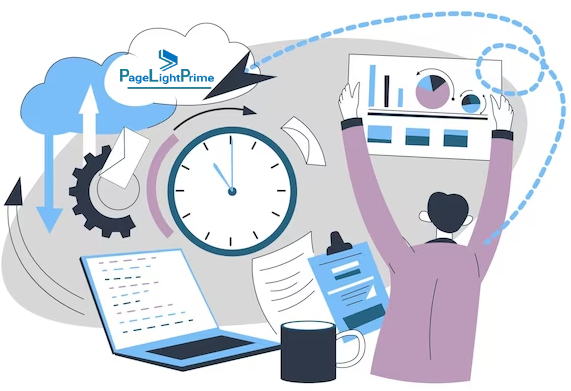Customization, Integration, and Configuration: Tailoring Legal DMS for Optimal Efficiency
In the dynamic and ever-evolving landscape of the legal industry, law firms are continually seeking innovative ways to enhance efficiency, streamline processes, and stay ahead of the curve. This is particularly crucial as legal professionals face unique challenges that traditional systems often struggle to address. A pivotal aspect gaining prominence is the adoption of Document Management Systems (DMS). While the benefits of a DMS are manifold, the key lies in the ability to customize, integrate, and configure the system, leveraging the power of Artificial Intelligence (AI), to align seamlessly with the unique needs of each law firm.
Written by Knowledge Team, posted on December 09, 2023

The Evolution of Legal Document Management
Gone are the days when legal professionals relied on traditional filing cabinets and paper-based documentation. The digital era has ushered in a new age of efficiency, where Legal Document Management Systems serve as the backbone for organizing, storing, and retrieving vast amounts of information. However, as the legal landscape becomes increasingly intricate, the one-size-fits-all approach no longer suffices.
The Need for Customization
Every law firm operates with its own set of practices, workflows, and specific requirements. What works for one may not necessarily work for another. This realization has prompted the demand for customizable Legal Document Management Software solutions with integrated AI capabilities. A tailored system ensures that the unique nuances of a firm’s operations are considered, leading to increased productivity and improved user adoption.
User Interface Customization
One of the primary aspects of customization is adapting the user interface to align with the firm’s workflow. This includes configuring dashboards, navigation menus, and document categorization based on the firm’s specific practice areas. For instance, a user-friendly interface not only enhances efficiency but also reduces the learning curve for legal professionals.
Workflow Automation with AI
Customization goes beyond the surface level, delving into the very processes that govern a law firm’s daily operations. DMS Workflow automation with AI allows firms to create, modify, and optimize processes within the DMS to mirror their unique procedures. From document creation to review and approval processes, customization ensures that the DMS becomes an intelligent assistant, learning from patterns and suggesting improvements over time.

Integration: The Power of Seamless Connectivity
In an era where data flows between various platforms, integration plays a pivotal role in enhancing the functionality of a DMS. Seamless connectivity between the DMS and other essential tools used by law firms, such as case management software, billing systems, communication platforms, and AI-powered legal research tools, creates a cohesive and synchronized environment.
AI-Powered Legal Research Integration
Legal research is a time-consuming aspect of legal work. Integrating AI-powered legal research tools with the DMS empowers legal professionals with quick access to relevant case law, statutes, and precedents. For instance, this not only expedites the research process but also ensures that legal arguments are grounded in the latest and most relevant information.
Intelligent Data Analysis
AI integration within the DMS can offer intelligent law firm data analysis capabilities. From identifying patterns in legal documents to predicting potential outcomes based on historical data, AI brings a new dimension to the decision-making process within a law firm.

Configuration: Fine-Tuning Your Legal DMS for Optimal Performance
Understanding Configuration in the Legal Context: Configuration in the legal context involves the fine-tuning of various settings within the DMS to align with the specific workflows, practice areas, and operational nuances of a law firm. This process goes hand in hand with customization, ensuring that the DMS becomes a finely tuned instrument rather than a one-size-fits-all tool.
Configuring User Roles and Permissions
One key aspect of DMS configuration is the establishment of user roles and permissions. Different legal professionals within a firm have varied responsibilities and levels of access. Configuring roles ensures that each user interacts with the system according to their role, maintaining data security and streamlining workflows. For instance, partners may have broader access, while associates or support staff might have more restricted permissions.
Metadata Configuration for Document Categorization
Effective document management relies on accurate categorization and retrieval. Metadata configuration involves defining the specific attributes and tags associated with each document type. By tailoring metadata configurations to the firm’s specific needs, the DMS becomes more adept at organizing and categorizing documents, facilitating swift retrieval and minimizing the risk of information overload.

Workflow Configuration for Streamlined Processes
Configuring workflows within the DMS is pivotal for streamlining processes unique to a law firm. From document creation and collaboration to approval processes, configuring workflows ensures that the DMS aligns seamlessly with the firm’s operational procedures. This not only enhances efficiency but also contributes to a more intuitive and user-friendly system.
Configuring Integrations for Interconnected Functionality
In the integration landscape, configuration plays a crucial role in ensuring seamless connectivity between the DMS and other tools used by law firms. Configuration settings enable data exchange and interoperability, fostering a cohesive environment where the DMS becomes a central hub. Configuring integrations with case management software, billing systems, and communication platforms enhances the overall functionality of the legal ecosystem.

Dynamic Configuration for Changing Needs
The legal landscape is dynamic, and law firms often face evolving requirements. An effective DMS should be configured to adapt to these changes. Dynamic configuration capabilities empower law firms to make adjustments as needed, accommodating new practice areas, regulatory changes, or shifts in internal processes. This flexibility is essential for future-proofing the DMS and ensuring its continued relevance.
Ensuring User Training and Support for Configuration Changes
As configurations evolve, it’s crucial to provide adequate user training and support. Ensuring that legal professionals understand the changes and enhancements within the DMS promotes smooth adoption and utilization. User feedback can also inform ongoing configuration adjustments to align the system with the evolving needs of the firm.

Conclusion: The Power of Precision Configuration
In conclusion, customization, integration, and configuration stand as pivotal phases in the journey of implementing a DMS in a law firm. Precision configuration, aligned with the firm’s unique requirements, transforms the DMS from a generic tool to a strategic asset. By configuring user roles, metadata, workflows, and integrations thoughtfully, legal professionals can unlock the full potential of their DMS, achieving optimal performance and adaptability in the ever-changing legal landscape. Consider how your law firm will harness the power of customization, integration, and configuration to shape its future success.
